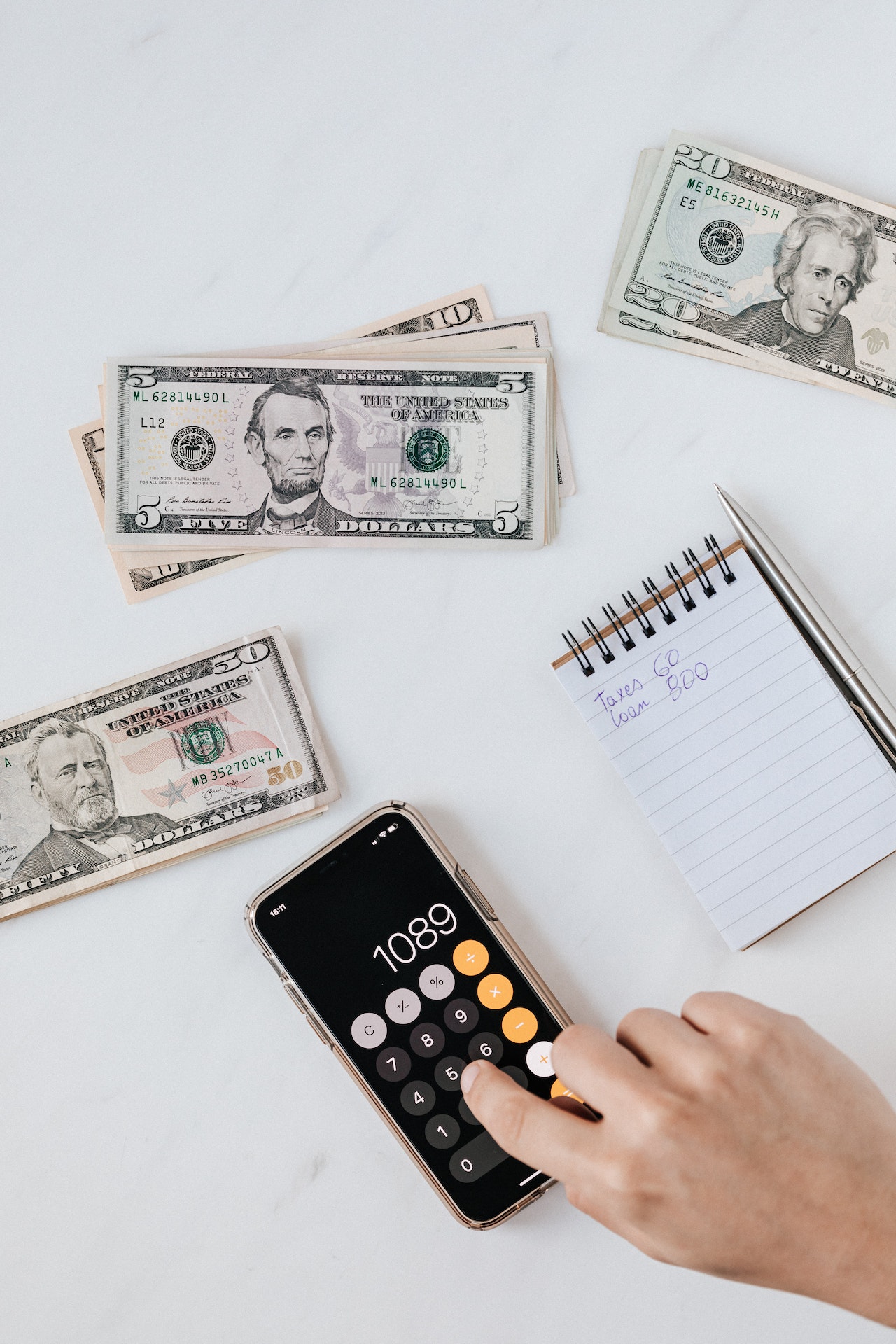Getting out of debt may seem like an overwhelming task, but it is possible with the right strategy and mindset. This comprehensive guide will outline the best practices for becoming debt-free in 2023. We will cover how to assess your financial situation, reduce spending, increase income, choose the right debt payoff method, stay motivated, and much more. With step-by-step instructions, helpful examples, FAQs, and key takeaways, you will have all the tools necessary to take control of your debt and finances this year.
Assessing Your Financial Situation
The first step is to get a clear picture of how much debt you currently have. Make a list of all your debt obligations, including:
- Credit card balances
- Personal loans
- Auto loans
- Mortgages
- Student loans
- Medical debt
- Other outstanding debts
For each debt, include the following information:
- Original amount borrowed
- Interest rate
- Minimum monthly payment
- Total balance remaining
This debt assessment will show you who you owe money to, the total amount owed, interest rates, and minimum payments. Having all this information in one place will help you understand your full debt load and choose the best path forward.
Calculating Your Debt-to-Income Ratio
An important metric when assessing your debt is your debt-to-income ratio (DTI). This measures how much of your gross monthly income goes towards debt payments.
To find your DTI, add up your total monthly debt payments and divide this by your gross monthly income. For example:
Total monthly debt payments:
- Credit card 1: $150
- Credit card 2: $200
- Auto loan: $300
- Student loan: $500
- Total debt payments: $1,150
Gross monthly income: $4,000
Debt-to-Income Ratio = Total Debt Payments / Gross Monthly Income
= $1,150 / $4,000
= 28.75%
As a general rule, your DTI should be below 36%. A higher DTI means you are stretched thin financially and more of your income is tied up in debt payments. Getting your DTI to a more manageable level will be key.
Understanding Your Credit Score
Your credit score is another important factor when assessing your financial health. Request your credit report from one of the three major credit bureaus (Experian, Equifax, TransUnion). This will include your credit score.
A higher score (generally 670 and above) means you are lower risk for lenders. A lower credit score makes borrowing more expensive. Paying down debts and managing credit responsibly can raise your score over time.
Review your credit report to check for any errors that may be negatively impacting your score. Dispute these with the credit bureaus to potentially improve your score quickly.
Having the full picture by assessing debts, DTI, and credit score puts you in a better position to tackle your debt strategically.
Reducing Spending

The next step is to look closely at your expenses. Account for every dollar you spend each month to see where money could be saved:
- Housing – Rent/mortgage, utilities, maintenance, taxes, insurance
- Transportation – Car payment, insurance, gas, maintenance
- Food – Groceries, dining out, work lunches
- Personal – Clothing, haircuts, gym, entertainment, subscriptions
- Miscellaneous – Child care, medical, pet care, gifts
Track expenditures in each category for 1-2 months. This will reveal spending habits you may not have realized before. Here are some examples of places to cut back:
- Downgrade cable/TV packages
- Eat out less, cook more meals at home
- Find free entertainment like parks, libraries, hiking
- Unsubscribe from unused streaming services
- Negotiate lower rates with service providers like internet, cell phone
- Sell unused items around the house
- Find cheaper insurance options
- Reduce energy usage to lower utility bills
With conscious effort, you may be able to trim $200-500 from your monthly spending. These savings can then be applied directly to debt balances.
Building an Emergency Fund

An emergency fund is money set aside to cover unexpected expenses or income disruptions. Before paying down debt aggressively, consider building a starter emergency fund of $500-1000. This provides a buffer so you do not need to rely on credit cards or loans when surprise costs pop up.
Once the starter emergency fund is in place, focus extra funds towards eliminating debt. After becoming debt-free, build the emergency fund up to 3-6 months of living expenses. Having this financial safety net reduces the chance of going back into debt.
Increasing Your Income

Bringing in more income each month will accelerate debt repayment. Here are some options to earn extra money:
Negotiate a Raise or Promotion
If you have been succeeding in your current job and taking on more responsibilities, make the case for a raise with your manager. Provide concrete examples of your contributions and increased workload. Aim for a 10-20% bump in pay if possible.
Even a small raise of 3-5% makes a difference, providing more funds towards debt goals. A promotion at work is another opportunity to increase your income.
Find a Side Gig
Explore side jobs to do in your spare time like:
- Ride share driving
- Tutoring / teaching
- Freelance writing, design, web development
- Selling handmade crafts online
- Renting out property or spare rooms
- Walking dogs, pet sitting, house sitting
Think about skills and experience you have that can translate into extra income. Even 10-15 hours per week of side work generates $500+ per month to pay off debt faster.
Increase Your Hours at Work
Ask your employer if taking on more hours is an option. For example, switch from part-time to full-time or pick up occasional overtime shifts. The key is increasing your income without taking on major lifestyle changes.
Every bit of extra income goes straight towards hitting your debt goals sooner.
Choosing the Right Debt Payoff Method
There are a few different tactics for paying down multiple debts efficiently. Choose the payoff method that fits your financial situation:
Debt Snowball
The debt snowball method prioritizes paying off debts from smallest to largest, regardless of interest rate. Here’s how it works:
- List debts from smallest balance to largest
- Make minimum payments on all debts except the smallest
- Pay as much as possible towards the smallest debt
- Repeat this process as each balance is paid off
This creates “momentum” by eliminating debts quickly at the start, helping you stay motivated. The debt snowball works best for those wanting small victories in the beginning.
Debt Avalanche
The debt avalanche method prioritizes paying debts with the highest interest rates first, which minimizes total interest paid. Here is how to implement this strategy:
- List debts from highest to lowest interest rate
- Make minimum payments on all debts except the highest rate debt
- Pay as much as possible towards the highest interest rate debt
- Repeat focusing on the next highest rate debt
This mathematically optimize approach saves the most money overall but may take longer to eliminate smaller debts. The avalanche method works well for those with expensive credit card or loan balances.
Balance Transferring
Balance transferring shifts credit card balances from high interest rate cards to a new card with a 0% introductory rate. This pause on interest accumulation allows more payments to go towards principal balances for a set period of time, typically 12-18 months.
Some things to keep in mind when balance transferring:
- Focus on transferring the most expensive card balances first
- Be mindful of transfer fees (usually 3-5% of balance)
- Have a payoff plan before intro rate expires
- Don’t use old credit cards once balances are transferred
This strategy offers temporary interest savings but requires discipline to pay off balances completely before regular rates kick back in.
Evaluate these payoff methods to decide which aligns with your debt repayment priorities and preferences.
Automation and Extra Payments
Two key ways to optimize debt repayment are setting up automatic payments and making consistent extra payments.
Automate minimum monthly payments on all accounts so you avoid late fees or hits to your credit. Set up bi-weekly instead of monthly payments to fit your pay schedule and make small dents faster.
As your budget allows, even small extra payments make a difference. Adding an extra $25-100 each month speeds up debt elimination. Rounding up payments to the nearest $50 or $100 automates this process.
These set it and forget it strategies help crush debt fast.
Staying Motivated on Your Debt-Free Journey
Paying off debt is challenging. It requires persistence through discouraging months of effort. Here are some tips to stay motivated:
- Track your progress – Update your debt balances and calculate interest savings monthly. Seeing the numbers decline steadily keeps you focused.
- Celebrate small wins – Treat yourself to something small each time you payoff an account, like a movie night or dinner out.
- Involve others – Share your debt-free goals with family or friends. Their support and accountability helps reach targets.
- Focus on your “why” – Revisit the reasons you started your debt repayment journey whenever motivation lags, whether buying a home or gaining financial freedom.
- Remain patient – Debt elimination takes time. Sticking with the process leads to the end goal, even if progress feels slow.
- Look to the future – Imagine life without debt obligations. This glimpse of potential possibilities keeps your eyes on the horizon.
Staying positive and determined takes work, but pays off tremendously in the long run.
Avoiding Common Mistakes

On the road to becoming debt-free, there are some missteps to avoid:
Not having a budget – A budget aligns your spending with financial goals like debt repayment. Track income and expenses monthly to inform how much can be allocated towards debts.
Ignoring small debts – It’s tempting to focus on big balances only, but small debts add up. Include every liability, regardless of size, in your payoff plan.
Skipping payments – Missed payments result in penalties, interest accumulation, and credit score damage. Always make at least the minimum payment on time each billing cycle.
Not revisiting spending habits – Reducing expenses is key for debt repayment. Check in monthly to see if new savings opportunities exist as habits or costs change.
Taking on new debt – Resist the urge to open additional credit cards or loans unless absolutely necessary. New debts prolong existing payoff timelines.
Not seeking help early – If you are struggling to manage payments month to month, reach out to a non-profit credit counseling agency. They can help assess options before debt becomes unmanageable.
Avoiding these missteps takes discipline but is essential for success.
Key Takeaways
- Assess your full financial picture including total debt, DTI, and credit score
- Reduce expenses where possible to direct more funds towards debt repayment
- Explore ways to increase your income with side jobs, raises, promotions, or overtime
- Pick the debt payoff method that best matches your priorities and finances
- Automate payments and consistently add extra to pay debts down faster
- Stay positive by tracking progress, celebrating small wins, involving others for support
- Learn from mistakes others have made on their journey
- With strategic effort, you can become debt-free this year
While the process requires dedication through months or years depending on your goals, the feeling of life without debt is well worth the temporary struggle. Implementing the steps in this guide sets you on the path to regain financial freedom.
Frequently Asked Questions
What if I cannot make minimum payments?
If you cannot make minimum payments month to month, contact your lenders right away to discuss hardship options. Programs like reduced/deferred payments may be available in the short term. Be proactive in communicating before debts become delinquent.
Should I use a debt management plan service?
Non-profit credit counseling agencies can set up Debt Management Plans (DMP) to negotiate lower interest rates and consolidate payments. This usually involves fees.Evaluate the terms carefully but can be an affordable option for managing high interest credit card balances.
When should I consider debt consolidation?
Debt consolidation combines multiple debts into one new loan with lower monthly payments through a personal loan or balance transfer. This can simplify repaying debts but evaluate if the interest savings truly outweigh additional fees and the payoff timeframe.
What debts should I focus on first?
As outlined in the debt payoff methods, either start with the smallest debts first (snowball method) or highest interest rate debts first (avalanche method). Pick the option best suited for your situation.
Should I tap retirement savings to pay off debt?
This is generally not recommended. Early withdrawal penalties and taxes eat into savings. Debt repayment should be funded from regular monthly cash flow. Start by reducing expenses and only use savings if absolutely needed.
How much should I put towards debt repayment each month?
Ideally 10%-20% or more of your take home pay after covering necessities. Some affordable rules of thumb are 50/30/20 budget (50% on needs, 30% wants, 20% savings/debt) or pay double the minimums.
Final Thoughts to Get Out of Debt
The road to becoming debt-free may feel long but taking it step-by-step makes it manageable. Focus on small actions each day like packing lunch instead of eating out or adding $20 extra to a loan payment. It all adds up.
While repaying debt, don’t forget to also save a small amount for emergencies and your future. Find the right balance.
Stay disciplined yet patient with yourself. Eliminating debt improves your financial situation tremendously. The rewards of achieving this dream make the effort to get there completely worthwhile.
More Articles
- 10 Shocking Ways You’re Wasting Money Every Day
- 7 Ways to Save More Money This Year
- Top 10 Tips for Getting Healthy in 2023
- Inspirational Quotes for Daily Motivation
Images from – Pexels

